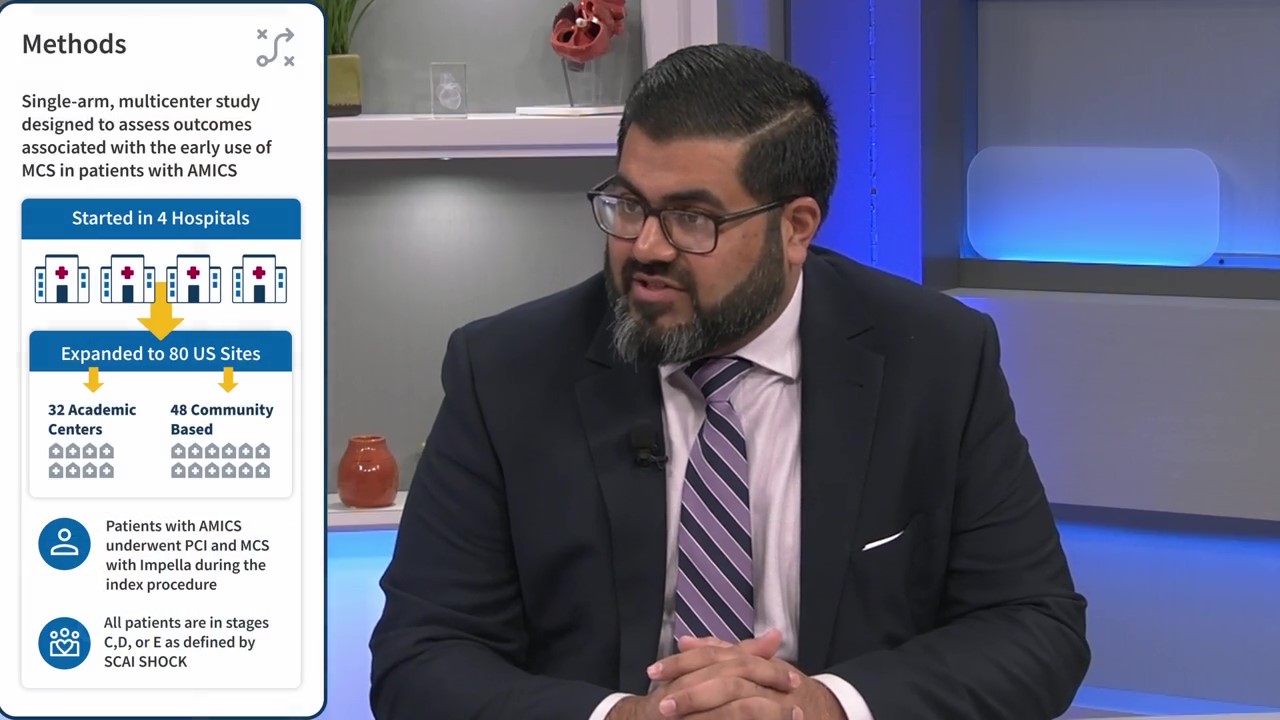Insertion, AMI Cardiogenic Shock
EACTS 2023 Evgenij Potapov: pMCS, ECLS, ECMELLA – When, How, and for Whom?
Prof. Evgenij Potapov, MD, a cardiothoracic surgeon at the German Heart Center in Berlin, discusses temporary mechanical circulatory support (tMCS) options for cardiogenic shock, highlighting the importance of active left ventricular (LV) unloading during VA ECMO support and the ECMELLA 2+ concept of support.
Prof. Potapov identifies his first-line tMCS treatment options for cardiogenic shock in Berlin: Impella 5.5® with SmartAssist® heart pump or Impella CP® with SmartAssist® heart pump, peripheral ECMO, or ECMELLA (a combination of Impella + ECMO). He explains that his first choice for patients with severe cardiogenic shock is axillary inserted Impella with or without additional ECMO. In some patients, however, particularly patients resucitated in the hospital and patients with lactate levels above 8 mmol/L, Impella is not enough. “These patients, they need more than isolated Impella,” Prof. Potapov states.
That’s when he turns to extracorporeal life support (ECLS), also known as ECMO. He reviews the advantages and disadvantages of ECLS and describes the conclusions from a randomized controlled trial (Thiele, 2023) that states that major bleeding, peripheral ischemic complications, and increased LV afterload were the reason ECMO alone did not work. That publication also concludes that recent non-randomized studies have indicated a potential benefit for concomitant unloading devices with ECLS, but have suggested higher rates of bleeding, hemolysis, and vascular complications.
So, Potapov states, the question becomes, “How to reduce known complications and unload the LV without producing new complications?” The answer, he explains, is ECMELLA, but not ECMELLA 1.0 (ECLS employing femoral vessels + Impella CP® through the contralateral femoral artery) or ECMELLA 1+ (ECLS employing femoral artery + Impella 5.5® through axillary artery), but ECMELLA 2+. ECMELLA 2+ entails single arterial access (usually right axillary, but sometimes ascending aorta) for Impella and arterial ECMO cannula. Prof. Potapov emphasizes a proactive approach to ECMELLA utilizing Impella with immediate escalation to ECMELLA and de-escalation to Impella and explains how this differs from the more common reactive concept employing ECMO followed by escalation to ECMELLA. He highlights data (Schrage, 2023) encouraging early active LV unloading and states, “So you recover more myocardium using this approach, using the active LV unloading. It’s not only survival. It’s also recovery.”
Prof. Potopov then shows how to perform his ECMELLA 2+ technique and he summarizes his experience in 92 patients using this approach in Berlin. These patients, he explains had a mean lactate of 10 mmol/L and half of the patients were resuscitated. Yet survival was 50%, which was double the calculated survival score of 25%.
He concludes that an algorithm-based approach for escalation and de-escalation improves survival in patients with severe cardiogenic shock and that preconditioning on Impella 5.5 improves survival in patients implanted with a durable LVAD.
Sign Up for Latest Updates
NPS-3990


